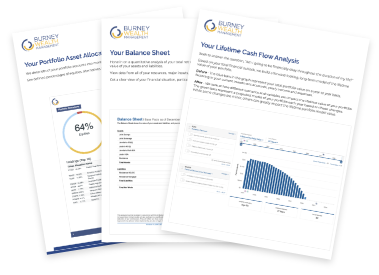Strategy Update: Moving to a Balanced Posture

We’ve shared how we select stocks on this blog in the past, and while that is an important piece of our investment process, it is not nearly as important as investing in the right style of stock at the right time. Style refers to whether a company is considered Value or Growth. Growth stocks are typically companies that are growing their earnings faster than the overall market, and investors are willing to pay a premium for this growth. In contrast, Value stocks are companies that are trading at a discount to their intrinsic value and are often seen as undervalued by the market.
While research suggests Value stocks outperform over the long run, the stock market moves in distinct phases favoring one style over the other. These phases last a long time – 22 months on average – and investing in the wrong type of stock can lead to a lot of frustration for investors.
No matter how cheap a company’s price-to-earnings (P/E) ratio looks, it can always go lower. No matter how fast a company is growing, market expectations can always be higher.
Value investors experienced the pain of investing in a growth phase during much of the 2010s and through the end of 2020. While both Value and Growth companies increased in Value, Growth stocks advanced at a much faster clip. One million dollars invested in Growth stocks at the beginning of 2010 was worth nearly $5.5M at the end of 2020 compared to $3.3M for Value1.
The gap between Growth and Value was so wide that it led many to wonder if value investing still works. A quick Google search for “Does Value Investing Still Work?” leads to a bunch of articles published at the end of 2020 and beginning of 2021, which is interesting timing, because that is right before value investing started to work again.
From March 1st, 2021, when the current Value phase started, to February 28th, 2023, right before the Silicon Valley Bank failure, Value companies increased in value by 18% while Growth companies fell in value by 7%.
Many Growth investors, feeling overconfident after such a successful ride in 2020, were caught holding onto pandemic era darlings that saw many of the gains achieved during 2020 disappear in 2022.
We call our investment strategy the Size and Style Responsive US Equity Strategy because we strive to lean into Value stocks when Value is in favor and Growth stocks when Growth is in favor. While some investment managers consider themselves Growth or Value managers, we view our strategy as an “all-weather” solution that can be used regardless of the market phase.
We evaluate the current style phase by measuring the rolling one-year performance differential between Value stocks and Growth stocks. When viewed over this time frame, there are clear patterns of pro-Value or pro-Growth performance.
A good rule of thumb is that once a phase has been established, expect that phase to continue, especially if the current phase hasn’t made it to its second anniversary yet. Eventually, however, it does end, so it is also necessary to look at short-term momentum. Sputtering momentum in the established trend often signals the start of a new phase.
Fundamental metrics offer additional information, though they do more to add context to the market environment than serve as a timing indicator. Valuations for Growth or Value stocks can become dislocated from historic norms. We would expect regression to the mean when this happens, though there is a saying that markets can stay irrational longer than you can stay solvent. A great example of this was the dotcom bubble that saw Growth valuations rise to record levels. Value looked cheaper and cheaper, but Growth kept moving higher and higher. Eventually the bubble burst and Value rebounded in the early to mid-2000s, but record valuations did not stop Growth from getting pricier during the bubble.
Looking at the stock market today, we appear to be at the very end of a pro-Value market phase. This is evidenced by a few factors:
- The current pro-Value phase is already longer than the average phase at 26 months.
- The past few months favored Growth companies and the rolling one-year Value edge is decreasing.
- Valuations for Growth companies have fallen, though they still do look expensive by some metrics. Still, with market expectations that interest rates are done rising and are even likely to begin falling and inflation trending in a positive direction, conditions may be improving for Growth companies.
We were leaning into Value stocks during this most recent Value phase but are now coming off this posture. The new target allocation for Style is to be balanced between Growth and Value. The length of the current phase coupled with consecutive months of pro-Growth momentum gives us less confidence that Value will continue outperforming. While we do think it is still possible to make a fundamental case for Value stocks, the cyclical nature of investing in Growth and Value leads us to believe a pro-Growth phase may be on the horizon. If we see more confirming evidence of pro-Growth momentum, we are likely to move even further towards Growth.
1Growth performance is proxied by the Vanguard Growth ETF VUG. Value performance is proxied by the Vanguard Value ETF VTV. Performance is calculated from the total return of both funds including dividends from 1/1/2010 to 12/31/2020.
The Burney Company is an SEC-registered investment adviser. Burney Wealth Management is a division of the Burney Company. Registration with the SEC or any state securities authority does not imply that Burney Company or any of its principals or employees possesses a particular level of skill or training in the investment advisory business or any other business. Burney Company does not provide legal, tax, or accounting advice, but offers it through third parties. Before making any financial decisions, clients should consult their legal and/or tax advisors.



